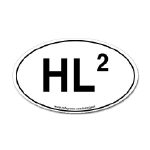Multimeter -- get one that has a continuity test feature. I've used that WAY more than the voltmeter setting. If you want to know if a battery's any good, you can take a Christmas light and some spare wire and get some idea that way -- or, one of those little pocket testers. But a decent multimeter can be very handy. Keep in mind that many computer power supplies will read nothing unless they're under load; in other words, you might plug it in, flip the switch, put your probes on one of the power connectors, and read nothing, because your multimeter isn't drawing enough current to...draw current. Or something. Electricity is bizarre.
General repair tips:
Sticky floppy drives: Cleaning and lubing fixes 90 percent of floppy drive issues, in my experience. If you search around, you can still find those old floppy head cleaning kits, which are basically a floppy with a cleaning pad where the actual data disc would be. You drip their cleaning solution (rubbing alcohol) on the pad and shove it in the drive, it makes a terrifying sound, and the heads are clean. You can put Scotch tape over the top for 400k drives (because those only have a head on the bottom, and where the top head would be, there's a small cloth pad -- a cleaning floppy will tear this off!)
If the issue is insertion/ejection, take the computer completely apart and, if necessary, remove the drive from its metal enclosure, so you can see and get at all the gears and moving parts. Take some lubricant such as a Teflon lube pen (Radio Shack) or even 3-in-1 oil (NOT WD-40), and drip it sparingly on all the moving parts. Take an expendable floppy diskette and insert/eject it manually (you will find the emergency eject lever much easier to manipulate with the drive removed from the computer) and watch where things move and rub together, and apply oil there. Repeatedly insert and eject the diskette until the action smoothes out.
Hard drive issues: An old computer with a hard disk, left in storage for an extended period of time, will frequently not boot up later. Sometimes you can stop the cooling fan (stick something through the slots, THEN turn on the machine), and listen closely; if you can't hear the hard disk spinning up, or if it's making a click-click sound, then its internal lube may be sticky. There's no safe way to take apart a hard disk unless you've got a clean room, but you can often get the drive to spin up at least one more time by doing the following: If the computer is small (e.g. a Mac SE), turn it off and unplug it, and pick it up with one hand in the handle slot and the other hand underneath the machine. With your upper hand, carefully but briskly give the machine a partial twist, like a spinning-top motion, several times. Do this over a couch or other cushioned surface in case you drop the Mac. You're trying to "torque" it in such a way as to try to get the hard drive to rotate in its shell slightly, to get it past the "sticky part" so it can get enough momentum going to actually spin up.
This method can be applied more effectively if you remove the drive itself and do the same roto-motion to it directly. Rinse, lather, repeat until it works or until you get sore.
Early Macs and power supply/screen issues: There are a host of common problems with the first three models of Mac (The original 128k, the 512k/ke, and the Plus) related to the power supply and the power circuitry to the built-in CRT. If you turn on one of these Macs and you get a flashing screen and/or a "flup-flup-flup" noise, you probably have a bad flyback transformer, or it's okay but its solder connection has degraded. Over the years, repeated heating and cooling of the internal components can cause the solder joints to "crack" from the temperature-related expansion and contraction. If you can do basic soldering, take the case apart and remove the plastic shield on the upright power supply. Locate the circular ring of solder points near the center of the upright power board; this is where the flyback transformer is connected to the board. Look closely, with a bright light and magnifying glass, at each solder point; if you see any tiny hairline cracks in the solder, then heat and remove the old solder and replace it with new, and try firing up the machine again. More likely than not, your problem will be solved.
The other most common power-related problems in these early Macs are caused by the large electrolytic capacitors wearing out, and/or having similar solder-related issues as described above. You can obtain replacement caps very cheaply from Radio Shack or other electronics suppliers -- just match the info printed on the old cap, desolder and replace. Make sure you note the polarity and get it right on the replacement, it does matter with electrolytic capacitors (though not with ceramic ones).
If you have an older Mac with screen geometry or blur problems, you can sometimes make adjustments to fix it. You will need a set of TV repair tools (Radio Shack), which are a cheap set of small plastic screwdrivers and hex drivers about the same size as Jewelers' screwdrivers, BUT they are made entirely of plastic. This is key for screen adjustments, because metal tools -- even if they're demagnetized -- will interfere with the screen appearance when you move them close to the CRT, and you need the screen to be "true" while you're working on it.
When you remove the case, you will see a bunch of markings on the thin white plastic shield that covers the solder side of the power supply board. Avoid the one labelled, I believe, "CUTOFF" -- this affects the overall voltage levels, and you can blow the logic board if you don't know what you're doing. The others, however, are safe to play with, and are labelled -- "height", "width", "focus", "contrast" etc. Turn up the front panel brightness control to the max before you touch anything, then adjust the internal brightness control so that the outermost visible edge of the screen is just barely black or until there are no visible diagonal scan lines. Then fiddle with the other adjustments til you're happy. Obviously, the machine will need to be on while you do this, so you can see the screen...keep one hand behind your back and use only plastic tools, and you will be safe. Never, ever touch the copper collar around the skinny part of the CRT (this is known as the "yoke"), even after the machine is off AND unplugged; the power supply can hold a charge for _days_ after unplugging, and it may not be enough to kill you but it sure does hurt.
But what if those adjustments don't address your problem, say, a "bowing" on one side? Now it gets dangerous. That yoke described above? If you look carefully, you will notice a series of small plastic squares around the CRT neck. Each of those is actually a little plastic bolt, and turning them will affect the characteristics of the ray gun. Again, you can't do this effectively with metal tools for the reasons mentioned above, and unless you have small children with Fisher-Price tool sets, you probably don't have a plastic wrench or pliers, so...you have to do it with your fingers. Maybe rubber gloves would help keep you safe, I honestly don't know. The best part is, you have to look AWAY from your hands to see how the screen looks, which increases the chances that you will bump the scary copper wires in the yoke. The pros recommend using a mirror so that you don't have to be reaching behind the screen while looking at the front...I never did that, I was just very careful and slow and sweaty.
Okay, but what if the entire screen is evenly tilted? The plastic bolts won't help you there. Look at the narrowest part of the yoke; you will see a thin metal collar going around the skinniest part of the tube, with what looks like (and probably is) some kind of white cloth lining between the metal collar and the glass tube. There is a screw in the collar, it's just like a hose clamp. If you loosen it slightly, and VERY VERY GENTLY twist the whole yoke, you will change the orientation of the tilt. Then, VERY VERY GENTLY retighten the screw JUST TO WHERE IT WAS BEFORE YOU BEGAN. Please wear safety glasses and gloves and preferably some kind of body armor while you're doing this, because if you overtighten that screw, or slip and yank on the yoke too hard, you will break the slender glass neck and send glass flying at high speeds in all directions due to the forces of the implosion (CRT = vacuum, remember). Take breaks, let your muscles recover, lighten up on the coffee, have a friend present who can help if you get hurt, etc. and bail out if it gets too hairy. This IS dangerous. It's even more dangerous doing these sorts of adjustments on big TVs and computer monitors, because the bigger they are, the more voltage they carry, and it doesn't take much to stop your heart.
Get Euro-style geek oval stickers and The Magic Switch!













